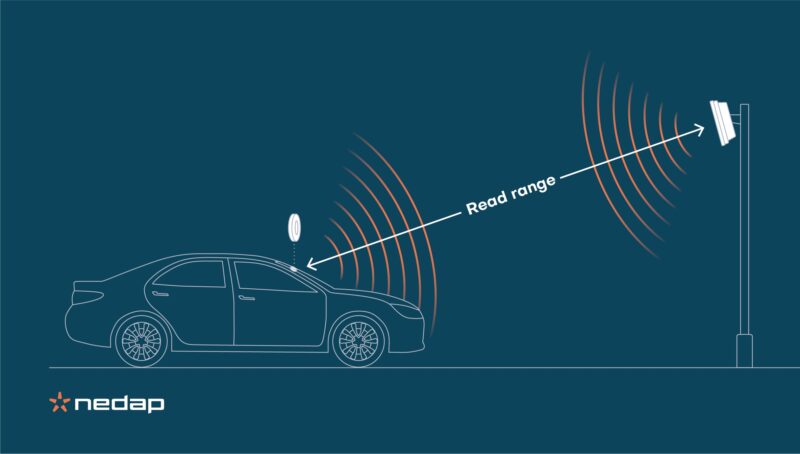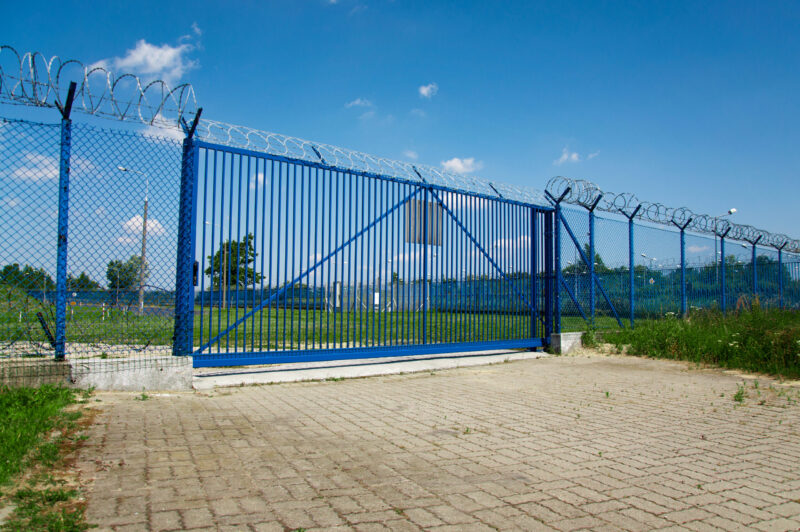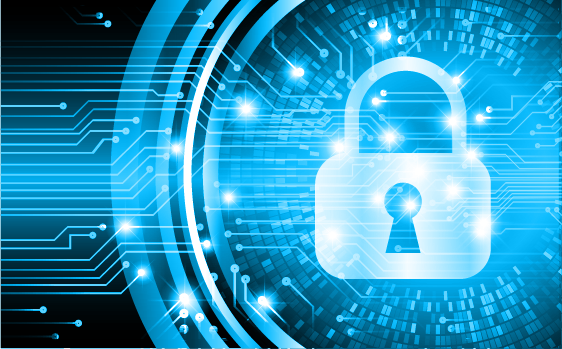RFID technology uses radio waves to transfer data between devices. However, both the tag and the reader must be within the acceptable read range for the exchange to occur. Nedap Identification Systems offers an extensive product portfolio of readers and tags for automatic vehicle identification. It’s important to consider how to interpret the read ranges of these readers and tags and which factors can affect the read range.
What is read range?
The read range is an important aspect of the read performance of an identification system. The reader sends out an enquiry signal over a specific radio frequency. An identifier within range will reflect this signal as a response to identify a user. The read range is the distance between identifier and reader at the point where its recognized.

Theory vs conditioned environment vs practice read range
The read range can be approached from different perspectives. From a theoretical perspective, the read range can be defined based on assumptions like the frequency, output power and more. It is also possible to verify and measure the read range in a conditioned environment like a shielded and anechoic chamber. In this way you can create a standardized setting for repetitive test processes and development purposes. A third perspective to measure the read range is by testing in practice. This can be done by setting up different practice settings. Because circumstances can differ in practice, it is important to take into account the factors that can influence the read range.
Factors that can affect the read range – in practice
The read range in practice may be different compared to theory or laboratory measurements. This is because you have to deal with external factors that, for example, can cause a read range reduction, but can also result in an increased range. There are a number of factors to consider that can affect the read range.
- The reader type
Different readers may have a different read range. This is caused by choices in the reader implementation, such as operating frequency, output power, receiver sensitivity, antenna size, antenna gain and polarization. Depending on the application and gate lay-out, you should determine what you need. For example, a high gain antenna is used when a long and directional detection area is required. A low gain antenna will generate an omnidirectional and short-range detection area. Nedap Identification Systems offers a wide range of readers suitable for different read ranges in multiple applications. - The identifier type
The identifier type defines at which range it can return a response to the reader. Choices in the tag design like the antenna size, RFID technology and application type affect the range.- Antenna size: generally bigger tags will have bigger antennas and a longer read range than smaller tags.
– Technology: passive tags that requires a high power-on must be closer to the reader to operate where semi-active tags are not affected by power-on restraints.
– Application type: there are several identifier application types available to suit different applications and positions to install the identifier on a vehicle. In general the most common identifier is placed in the interior of the vehicle on the windshield – but there are also exterior tags available or heavy duty tags for rough environments. - The installation
The antenna height and angle of the reader defines the direction of the signal to scan for identifiers. A clear and direct line of sight results in the best read range. When the tag is installed in line-of-sight with the reader, you benefit from optimal tag signal backscattering. Also check the orientation and placement, specifically for mount-on-glass or mount-on-metal tags. To get the optimal read range ensure to follow the installation guidelines.In some cases it can be beneficial for performance to reduce the read range of the reader. If for example there is a lot of cross traffic within the maximum range, reducing the read range can exclude unwanted readings. - The environment
Several environmental factors affect the read range significantly, such as temperature or relative humidity. Also, external interference can occur from other RFID readers operating on the same or nearby frequencies or from other electrical equipment. Another environmental factor to consider is reflection. RFID signals can be reflected on floors, ceilings, walls and objects. The reflected signal can reach the identifier and amplify the incoming signal, but it can also have a small delay which can distort the signal so it can’t be read. Generally, the further the distance from the reader, the more reflections will distort the signal.To understand whether your prevailing environment affects the read range adversely, you should keep testing various readers in different environments.
Interpreting read ranges between Nedap’s readers and tags
In addition to theoretical calculations and tests in our anechoic chamber, Nedap has tested our products in different settings in practice. At Nedap, we define the maximum read range or ‘up to’ value as what has been tested in practice as the point from which there is a stable identification between reader and identifier under optimal installation and environmental conditions. This gives an indication closest to practice. Although we understand that it is not always possible to create these conditions. In our installation instructions you will find clear explanations to achieve the maximum read rate. Feel free to contact our technical support team if you have any questions or concerns.


